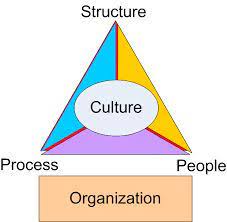Want help to write your Essay or Assignments? Click here
Corporate Culture and Strategy
An organization’s mission strategy is a précis of the way in which the firm perceives its role and the beliefs the company employs in attaining its objectives. The culture of an organization signifies the professional values an organization espouses which dictate how the company interacts with its customers, partners, vendors and workers. Since the culture of the organization is a driving force in how the business organization carries out its business, it has a significant impact on developing business strategy (Hofstede, 2014).
This paper delves into the topic of culture and strategy. In this investigation of the topic, the subject of culture and strategy is analyzed exhaustively and critically. In particular, this paper provides an in-depth discussion of the relationship between company culture and strategy, importance of alignment between culture and strategy, and how national culture really influences an organization’s strategy.
Correlation between corporate culture and strategy
There is a strong relationship between corporate culture and strategy. In general, strategy is considered as a product of culture while culture, on the other hand, is considered as a product of strategy (Browaeys & Price, 2009). In spite of how good the company’s strategy is, when it really comes down to it, Schneider (2011) noted that it is the people who usually make the difference. At its core, strategy is logical and rational, simple and clear.
Strategy has to be easy to talk about and to understand. A business organization is lost if it lacks a clear strategy. In essence, strategy is the pattern of activities that a company follows as it pursues its long-term purpose. Put simply, it refers to where the company is at the moment, where the company wants to go, and how the company intends to get there (Akbar et al., 2012).
Strategy comprises a number of factors which include the following: objectives and goals of the company; mission statement and vision; and critical success factors, or the things which the company has to get right for it to succeed in its mission. It also includes core values; reputation/brand, which entails developing and communicating meaningful and powerful differences between the company’s offerings and the offerings of the company’s competitors; and positioning, whereby a company builds a preferred and valued position within the minds of its target audience (Cristian-Liviu, 2013).
Want help to write your Essay or Assignments? Click here
Conversely, culture is understood as the set of beliefs which drive the behaviours of workers. These could be things that everyone within the organization knows and shares, in addition to implicit rules. It is worth mentioning that the range of acceptable behaviours of workers in the company is rooted in these underlying beliefs (Weick, 2014). On the whole, organization culture consists of the shared values, norms as well as ideals in a business organization and it actually sets the basis and groundwork for strategy.
An important starting point of understanding the culture of a company is to understand its founding principles: that is, its legacy, heritage, the clients and markets which it serves, and its points of differentiation. Anderson, Anderson and Lee (2015) pointed out that culture of a company is an aggregation of the beliefs and mindset of the company’s workers. It is the manifestation of the mission, vision and principles which bind employees in the organization together.
In the current business world in which sell-offs, diversifications, acquisitions, expansions and mergers are becoming increasingly common, it is becoming very important to understand corporate culture in strategic decision-making. The consolidation of AOL with Time Warner did not succeed because of culture clash as did the DaimlerChrysler merger. Organization culture is a very powerful factor in an organization’s lasting success.
Want help to write your Essay or Assignments? Click here
For a strategy in a company to develop and be successfully executed, that strategy has to align fully with the corporate culture. As such, goals and initiatives need to be established within the company in order to support and establish a corporate culture which embraces the strategy of the company over time (Su, Yang & Yang, 2012). Corporate culture has a significant impact on strategy execution within the organization.
Characteristics of stability: an organization culture that is stable, a culture that would systematically support implementation of strategy, is one which promotes a culture of cooperation, unity, partnership and teamwork amongst staff members. This kind of organization culture would certainly enhance commitment amongst workers and focus on productivity in the company instead of resistance to regulations and rules or external factors which prohibit success.
Want help to write your Essay or Assignments? Click here
Flexibility and adaptability: according to Fombrun (2012), companies which remain flexible tend to embrace change and establish an environment that is open to both communication and production. This creates a model which welcomes cultural diversity and helps in clarifying implementation of the strategy. In any company, corporate culture could serve a number of different purposes such as unifying employees in the company and helping to establish a set of common rules or norms within the company that members abide by.
Goal unification: corporate cultures that are unified, strong and flexible would approach strategy execution and affect execution positively through aligning goals. In essence, goals could come into alignment when the culture of the business organization is working to focus on productivity and getting the mission of the company achieved. This might include shipping out more product items compared to the company’s main competitors, getting products delivered to the company’s clients on time, or similar objectives.
This would create a domino effect within the company which would ensure that all work carried out by every work group and employee within the organization is really focused on performance and on the company’s strategic importance (Dutch, 2013). This would allow corporate culture of the company to be in alignment with strategy execution at the most basic level. Hanson and Melnyk (2014) noted that for this unification level to work, it is important that goal setting aligns with and is supported by processes, procedures, policies and systems within the company, which would help to attain strategy execution and continuing the organization’s cultural integrity.
Want help to write your Essay or Assignments? Click here
Process implementation: part of strategy implementation and cultural alignment entails process implementation. It is noteworthy that processes include the use of technology in facilitating goal achievement as well as the results which an organization is looking for when it works with clients to satisfy their needs. Although the hard problems and needs of a company are attained most of the time, the corporate culture becomes overlooked during the process. This is where processes actually come into place and execution of the strategy slowly comes into existence to maintain and sustain corporate culture and strategies (Dutch, 2013).
Cultural alignment: when corporate culture is in alignment with implementation of the strategy, a company can operate more efficiently within the international marketplace. Corporate culture allows the senior managers of a company to work both as teams and individually in developing strategic initiatives in the company. These might include re-establishing old partnerships and creating new partnerships to continue to deliver the best services and products to an international marketplace (Slater, Olson & Finnegan, 2011).
Want help to write your Essay or Assignments? Click here
Organizational strategic alignment, in its simplest form, is lining up the strategy of the company with its organization culture. For an organization to experience organizational strategic alignment, then its goals, processes and management should align. In order to create a supportive culture, an organization should clearly define the competence of its resources by assessing whether its processes, employees and equipment could actually handle new changes. If staff members do not have the competence for handling a new strategy, then the organization should offer training to improve the skills of its workers and managers.
If there is no sufficient support and training, the relationships between managers and staff members within the organization would suffer and the company would lack flexibility. To establish a culture of support, the top managers need to be involved in organizational strategic alignment from the beginning and provide the right resources to help in ensuring success of the workers and the organization (Yarbrough, Morgan & Vorhies, 2011). Workers should commit to supporting an organization’s strategic alignment and senior managers could help ensure this success by defining the goals of the organization in a clear manner and giving incentives to help workers accept new strategies.
Want help to write your Essay or Assignments? Click here
When strategy and organization culture are misaligned, the misalignment would short-circuit performance and increase the probability that the company will not attain its goals. An organization culture which all employees within the company subscribes to will help in creating focus amongst the workers.
When workers comply with the values and beliefs of the organization, it will give a unified impression to partners, customers and vendors (Bushardt, Glascoff & Doty, 2011). The organization could then formulate a strategy knowing that every member would uniformly apply the guidelines and improve the likelihood that a strategy would succeed.
In aligning corporate culture with strategy, the following steps are important: first, the senior managers should define their company’s long-term set of guiding principles – the philosophy and purpose –, which are essentially the organization’s identity. A strategic plan would not succeed if the strategic plan is really not supported by these key principles of the company’s core culture.
Secondly, the senior management should evaluate the weaknesses and strengths of the company as well as the external factors which could impact success (Simoneaux & Stroud, 2014). Thirdly, the executives should create the company’s vision and then set strategic goals that are measurable and specific. Fourthly, the senior management should decide the strategic priorities which are in alignment with those strategic goals. It is worth mentioning that strategic priorities are a part of the organization’s core culture.
They are basically the values and principles which could alter given that their function is to align the corporate culture with the organization’s strategy. A company’s core corporate culture has to drive the company’s strategy and align with it (Mintzberg, 2011). Fifthly, with a clear understanding of the organization’s core corporate culture, strategic goals and vision, the top managers should create an action plan with measures for guiding performance. Finally, the senior executives should turn the strategic goals into measurable outcomes. Processes and employees should be aligned with the company’s core corporate culture and strategy (Simoneaux & Stroud, 2014).
Want help to write your Essay or Assignments? Click here
National culture and strategy
A country’s national culture greatly influences the strategy adopted by a company. National culture has an impact on organizational strategy and implementation of the strategy, and can ultimately result in business failure or success. In essence, all national cultures have an impact on companies in both negative and positive ways, depending on the particular business, the business cycle, as well as the specific strategies being pursued (Hammerich & Lewis, 2013).
Cultural dynamics could either derail or enable performance depending on these different factors. It is important that a company’s senior management recognize the cultural factors which have a negative impact on performance and the ones which could be harnessed to foster superior performance (Hammerich & Lewis, 2013). To formulate strategy, a company needs to identify and interpret strategic issues.
In this process, the company scans, selects, interprets and validates information and establishes priorities amongst issues. The national culture of any country could actually influence this process given that it affects the nature of the relationship of a company with its environment and the nature of the relationships amongst employees in a company (Schneider, 2011).
Whether it is big company pursuing international growth strategies or a small start-up firm in its initial phases of the growth curve, culture plays a vital role in making sure that the company does not swerve off the path and that it remains on course. Usually, driving and executing effective strategic change is a medium-term to long-term priority for a company’s management.
Likewise, the corporate culture of a company also develops with time, with a combination of active support by the company’s top leaders and voluntary cohesion and dissemination as the company’s purposes and beliefs pervade through the hierarchy. Owing to the intrinsic patience which the company’s top management requires to drive a strategic change and establish a focused culture, it is really sensible that both of them – strategic change and purposeful culture – work alongside each other and not against (Schein, 2012).
Want help to write your Essay or Assignments? Click here
Companies which are highly successful in driving strategic change and implementing it share 3 fundamental principles by which they embrace corporate culture and utilize it in the process as an enabler. Firstly, such companies are aware of differences in global cultures – this factor might be more pertinent and applicable to multinational corporations although it is equally applicable to small start-up firms that have ambitious aspirations for growth.
For instance, knowing the way that a worker in Malaysia would react to a new strategic initiative in comparison to how a worker in the Netherlands would react is of great importance in executing strategic change at the ground level (Schwartz & Davis, 2011). In essence, it implies that the overarching aspects of the strategy should be modified to fit the with local market-level ways of operation.
The second underlying principle is recognizing what culture means to different peoples – Cristian-Liviu (2013) reported that this second principle is more of a challenge for big companies with scale than to new, start-up firms. Within an organization, culture implies different things for different individuals.
In a brand consultancy company for example, the design/creative department might think that their department is really the best place to work in the organization, but the sales and marketing department whose role is to sell the design solutions, might think that the design/creative group’s capabilities are dull and outmoded. Broader changes within the company would impact employee groups in different ways and the cultural aspect of the change should be carefully measured (Schwartz & Davis, 2011).
The third underlying principle entails aligning strategic change initiatives with corporate culture – the Time Warner-AOL and DaimlerChrysler mergers were both in the same industry but still they did not succeed, they both failed. This evidently illustrates the dangers of overlooking culture as a factor when planning and executing a company’s strategic initiatives (Mühlbacher, Vyslozil & Ritter, 2014).
Although both Chrysler and Daimler produced vehicles, the styles of management and the collaboration processes in each firm were driven very much by their nation of origin; that is, the German and American cultural ethos. These 2 cultural ethoses were never reconciled and adapted in the merged organization and they clashed all the time. In essence, every form of strategic planning should take in corporate culture as a factor that impacts success, as well as manpower, finance and capabilities (Weick, 2014).
Want help to write your Essay or Assignments? Click here
Conclusion
To sum up, there is a really strong correlation between corporate culture and strategy. Strategy is considered as a product of culture while culture, on the other hand, is considered as a product of strategy. For a strategy in a company to be formulated and executed successfully, this strategy has to align completely with the culture of the organization. Thus, goals and aims need to be established within the firm so as to support and establish a corporate culture which embraces the strategy over time.
When organization culture is in alignment with execution of the strategy, a firm can operate more efficiently within the international market. When strategy and organization culture are not aligned, then this misalignment would short-circuit performance and increase the likelihood that the firm would not accomplish its goals. National culture has a significant impact on organizational strategy and implementation of that strategy, and could eventually result in business failure or success.
References
Akbar A. S. A., Salamzadeh, Y., Daraei, M., & Akbari, J. (2012). Relationship between Organizational Culture and Strategy Implementation: Typologies and Dimensions. Global Business & Management Research, 4(3/4), 286-299.
Anderson, G. M., Anderson, M. J., & Lee, J. B. (2015). Defining Corporate Culture. NACD Directorship, 41(2), 36-37.
Browaeys, M. J., & Price, R. (2009). Understanding cross-cultural management (1st ed.). Boston, MA: Pearson Education Limited
Bushardt, S. C., Glascoff, D. W., & Doty, D. H. (2011). Organizational culture, formal reward structure, and effective strategy implementation: A conceptual model. Journal Of Organizational Culture, Communications & Conflict, 15(2), 57-70.
Cristian-Liviu, V. (2013). Organizational culture and strategy. how does it work? An empirical research. Annals Of The University Of Oradea, Economic Science Series, 22(1), 1690-1696.
Dutch, M. A. (2013). A Symbiotic Framework of Human Resources, Organizational Strategy and Culture. Amity Global Business Review, 89-14.
Fombrun, C. J. (2012). Corporate Culture, Environment, and Strategy. Human Resource Management, 22(1/2), 139-152.
Hammerich, K., & Lewis, R. D. (2013). Fish can’t see water: How national culture can make or break your corporate strategy. New York City, NY: Wiley
Hanson, J. D., & Melnyk, S. A. (2014). Culture Eats Strategy … and how to deal with it. Supply Chain Management Review, 18(4), 20-26.
Hofstede, G. (2014). Cultural dimensions in management and planning. Asia Pacific Journal of Management, 12(9):81-99.
Mintzberg, H. (2011). Patterns in strategy formation. Management Science, 24 (9): 1-18.
Mühlbacher, H., Vyslozil, W., & Ritter, A. (2014). Successful Implementation of New Market Strategies–A Corporate Culture Perspective. Journal Of Marketing Management, 3(2), 205-217.
Schneider, S. C. (2011). Strategy formulation: The impact of national culture. Fontainebleau, France: ISEAD.
Schein, E.H. (2012). Organizational culture and leadership. San Francisco: Jossey Bass, Inc.
Schwartz, H. & Davis, S.M. (2011). Matching corporate culture and business strategy. Organizational Dynamics,11(9): 30-48.
Simoneaux, S. L., & Stroud, C. L. (2014). A Strong Corporate Culture Is Key to Success. Journal Of Pension Benefits: Issues In Administration, 22(1), 51-53.
Slater, S., Olson, E., & Finnegan, C. (2011). Business strategy, marketing organization culture, and performance. Marketing Letters, 22(3), 227-242. doi:10.1007/s11002-010-9122-1
Su, Z., Yang, D., & Yang, J. (2012). The match between efficiency/flexibility strategy and organisational culture. International Journal Of Production Research, 50(19), 5317-5329. doi:10.1080/00207543.2011.618149
Weick, K.E. (2014). The significance of corporate culture. In Frost, P.J. et al. (Eds.) Organizational Culture. Beverly Hills, California: Sage Publication, 381-390.
Yarbrough, L., Morgan, N., & Vorhies, D. (2011). The impact of product market strategy-organizational culture fit on business performance. Journal Of The Academy Of Marketing Science, 39(4), 555-573. doi:10.1007/s11747-010-0238-x
Want help to write your Essay or Assignments? Click here









